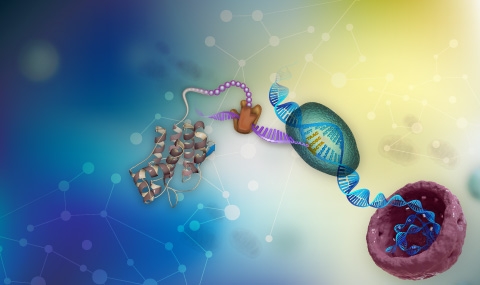We combined bioinformatics and genomics to study how gene expression regulatory networks are wired and function within living organisms. We study the genetic components of protein secretion in cells. We decipher sequence motifs embedded in secreted proteins that govern their secretion efficiency. We employ libraries of synthetic genes to reveal how sequence elements within genes dictate RNA localization and hence also protein secretion (Cohen-Sontag PLoS Genetics with Jeff Gerst, 2019). We recently discovered for the first time mRNA editing in bacteria (Bar Yaacov et al. Genome Research 2017), and we found that toxins manifest deliberate editing that can activate them and that might be implicated in the trade-off between enhanced microbial proliferation and drug persistence. We discovered that the transcription and RNA degradation systems in genomes are coupled (Shalem et al. Molecular Systems Biology 2008, Shalem et al. PLoS Genetics 2011).
We Pavlovian Microbial Conditioning (PMC), a phenomenon in which microbes appear to have evolved to “predict” environmental changes and prepare for them ahead of time (Mitchell et al. Nature 2009). We model PMC mathematically and show that it can be described as an evolutionary result of cellular economy (Mitchell & Pilpel PNAS 2011). We now expand this paradigm and combine it with the process that we term “Horizontal RNA Transfer” (HRT), where we find, together with Ilana Kolodkin-Gal, that even remotely related bacteria share RNA between them. We apply the concept of PMC to HRT, by asking if sharing of RNAs can transfer information of predictive values between neighboring microbial cells. We study the microRNA regulatory networks in human and mammalian cells. These studies have led us to discover a new function for the processes of 3’ UTR shortening that is often observed in cancer. According to our new model, with Moshe Oren, (Hoffman et al. PLoS Genetics 2016) shortening of 3’ UTR serves as a means for cells to activate so-far latent microRNA binding sites and it acts to repress tumor suppressors by cancerous cells. We study the biology of genetic redundancy, as manifested often by gene and genome duplication, and we ask how redundancies emerge in evolution and how they are regulated (Kafri et al. Nature Genetics 2005, PNAS 2006, PNAS 2008, Cell 2009). We study noise in gene expression – the effect of stochasticity in translation and transcription of genes, and together with Naama Barkai we showed how noise scales with expression means, yet that stress genes, especially under stressful conditions, show enhanced noise (Bar-Even et al. Nature Genetics 2006).


